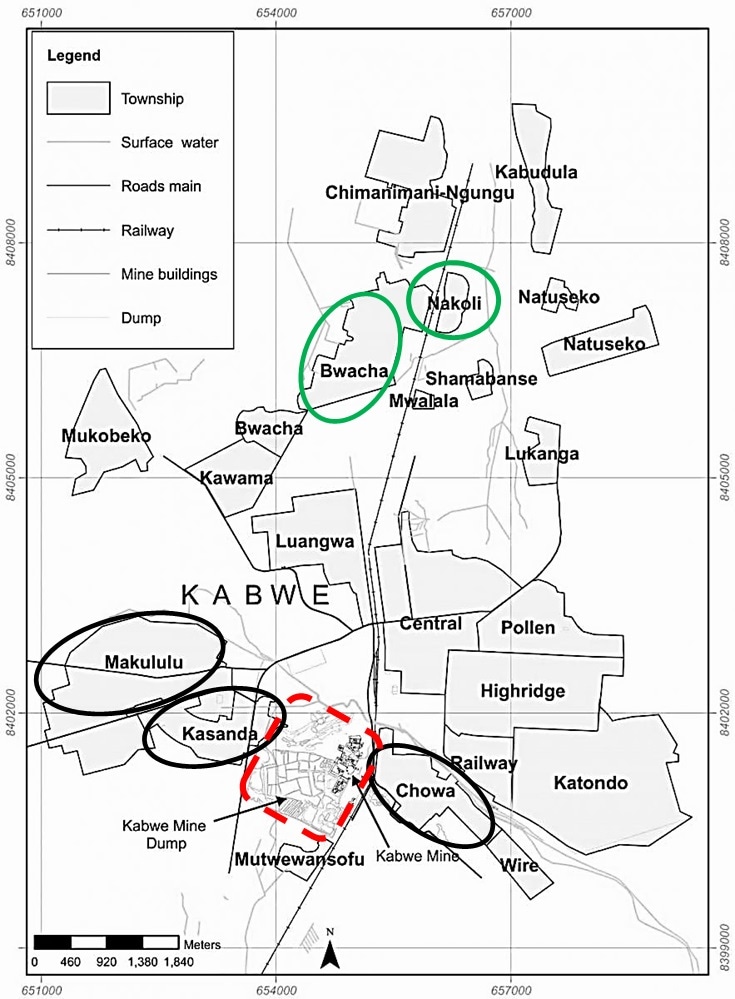Researchers have revealed a connection between methylation of genes implicated in heme synthesis and carcinogenesis and high blood lead levels in children, signifying a previously unfamiliar mechanism for lead poisoning.

A line map of Kabwe, indicating the mine dump (red dashes) and the townships involved in the study (black and green ovals). Image Credit: Yared B. Yohannes et al., Environmental Research, June 5th, 2020.
One of the well-documented diseases is lead poisoning, the incidence of which has enormously decreased because of the limited use of lead. Nonetheless, several areas around the world continue to have unsafe lead levels in the environment.
Lead poisoning leads to symptoms like infertility, kidney failure, and abdominal pain, etc., but the most damaging impacts are observed in children, leading to developmental and neurological deterioration. But despite this fact, several mechanisms behind it continue to be a mystery.
In the present study, published in the Environmental Research journal, Hokkaido University scientists teamed up with collaborators from the University of Zambia to analyze blood lead levels in as many as 140 children aged between 2 and 10 years in Kabwe, Zambia.
The team selected children from townships distant from and close to an ancient and highly polluted lead-zinc mine. Because of this mine, Kabwe was regarded as one of the 10 most polluted places in the world in 2013, according to a survey performed by the Blacksmith Institute (currently, Pure Earth).
Blood lead levels were quantified in all children. The researchers found that children residing closer to the mine had three times higher blood lead levels than those residing farther from the mine.
The team subsequently employed a method known as methylation-specific polymerase chain reaction (MSP) to establish the methylation of the DNA sequences. Methylation can be described as a process through which methyl (CH3) groups are introduced to DNA; a modification like this usually decreases the gene activity.
Elevated blood lead levels positively correlated with abnormal and increased methylation of DNA that is responsible for causing gene expression. ALAD were the affected genes, which produce a vital compound in the development of red blood cells and a tumor suppressor gene called p16, which is often deactivated in different forms of cancer.
The research work has determined the association between abnormal methylation of DNA and blood lead levels. It has also uncovered a crucial healthcare problem in children living in the region. Upcoming studies in this field would involve large-scale analyses to establish the true level of lead poisoning and set up an effort to offer the required treatment and care to children in the region.
The ultimate goal is to achieve a lead-free population to ensure a healthy future.”
Dr Yared B. Yohannes, Laboratory of Toxicology, Department of Environmental Veterinary Sciences, Hokkaido University
Source:
Journal reference:
Yohannes, Y. B., et al. (2020) Blood lead levels and aberrant DNA methylation of the ALAD and p16 gene promoters in children exposed to environmental-lead. Environmental Research. doi.org/10.1016/j.envres.2020.109759.